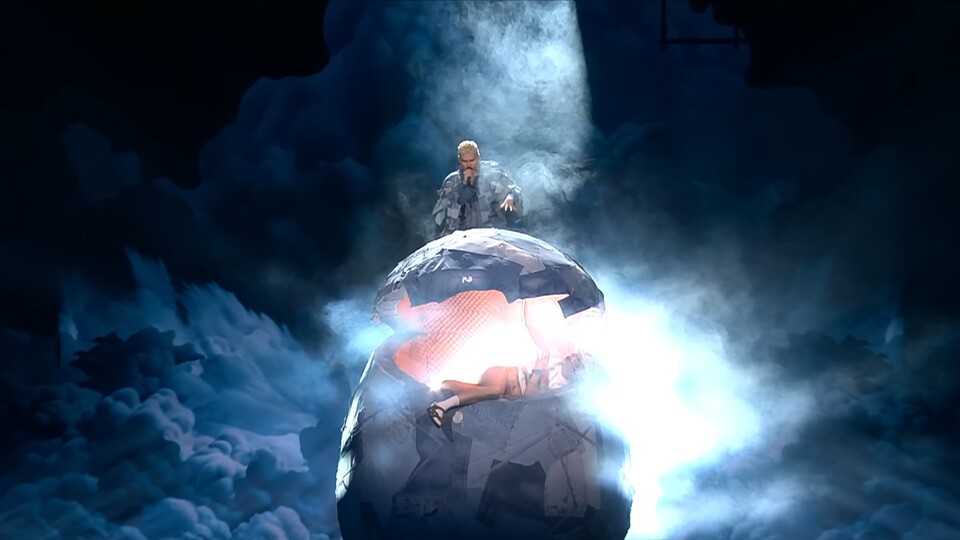
The performance of Windows95man can be described as at least bizarre. (Image source: YouTube/Eurovision Song Contest)
Advertisement
Tomorrow, Saturday, May 11th, the final of the Eurovision Song Contest will take place in Sweden at 9 p.m. Even Windows 95 is returning to the stage, or rather: the Windows95man
.
This is the stage name of the Finn Teemu Keisteri. He has been wearing it since 2013.
Windows95man only sings part of it himself, because he is not a singer. His compatriot Henri Piispanen does most of the singing.
Why Windows 95 of all things?
Keisteri is a video artist and disc jockey. The art style and appearance are based on the mid-1990s.
Advertisement
He discovered Windows 95 as a symbol of this time. The music also sounds like 1995, but listen (and see) for yourself:
Link to YouTube content
Interestingly, Windows95man was in last place in the Finnish preliminary round for the ESC according to the jury's evaluation (via Eurovision.de). However, the viewers saw it differently and chose the 38-year-old as the winner via televoting.
However, Keisteri will probably have to do without his Windows 95 shirt and the corresponding cap in the ESC final, as the competition statutes prohibit advertising.
Even more Windows at ESC 2024: At the Semi-final appearance by the Dutchman Joost Klein was a so-called in the background Blue Screen of Death
(BSOD) that can appear when Windows crashes. But it wasn't real, it was part of the show.
This is Windows 95
Windows 95 was released on August 24, 1995. It founded the Windows 9x series (Windows 95, 98, 98 SE and ME) and is considered the first independent Windows operating system.
The latter is quite controversial: Many people think of Windows 95 as just a graphical user interface for MS-DOS, since in some areas it does not work without DOS routines.
What is certain is that Windows 95 is based on MS-DOS. This only changed with Windows 2000 and Windows XP, both of which are based on an NT kernel and no longer on DOS.
In many ways, Windows 95 laid the foundation for the current Windows 11. For example, the famous Start button was introduced with it. The desktop with trash can and Windows Explorer were also part of the operating system back then.
In contrast to Windows 3.11 and its predecessors, Windows 95 also supports real multitasking. Programs can run side by side and are not simply stopped and stored in memory.
The context menu is also an innovation that was introduced with Windows 95 and has been retained to this day.